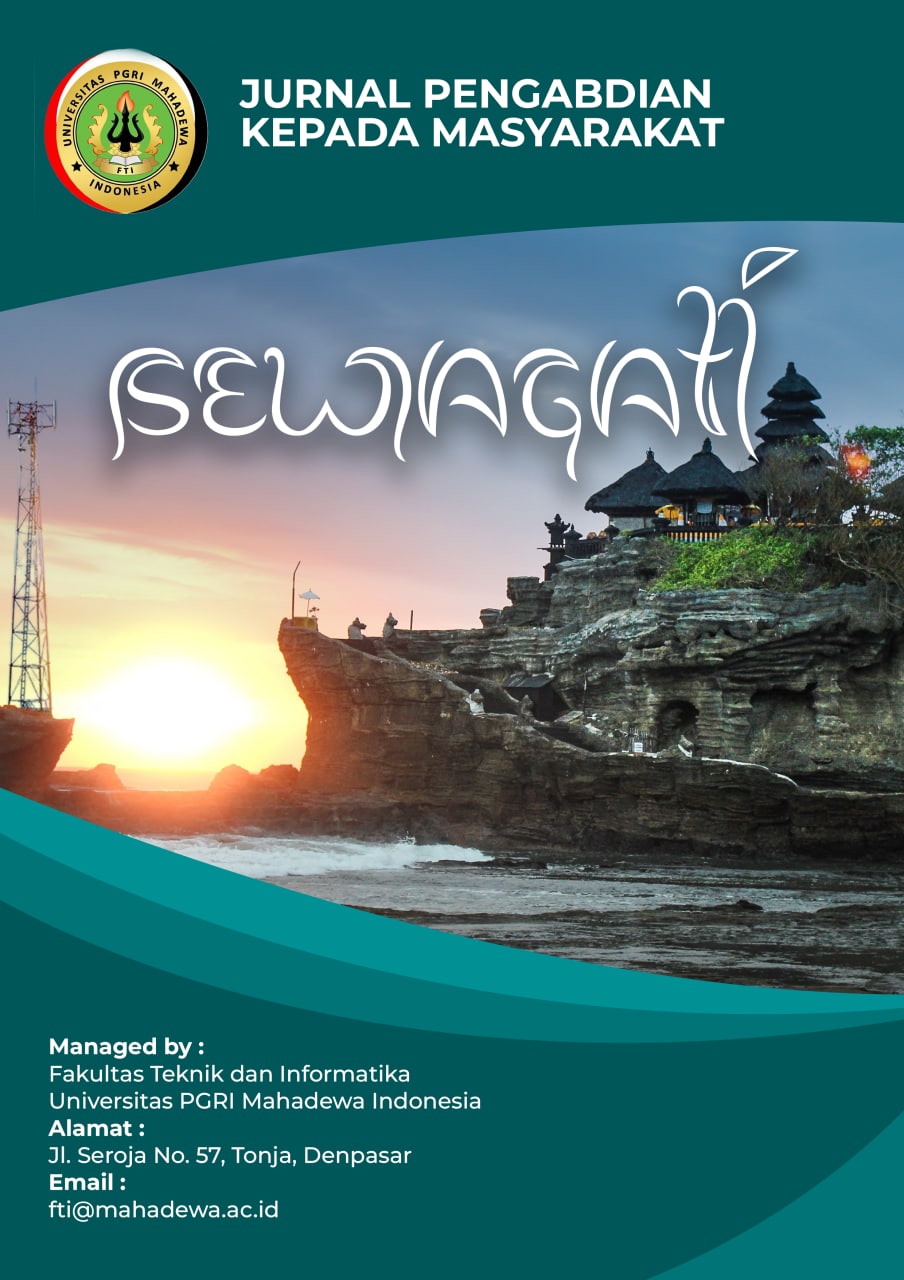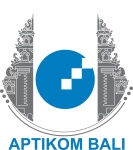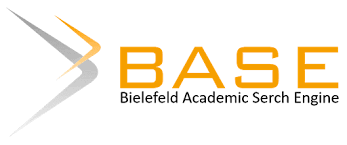PELATIHAN PEMBUATAN BROSUR SEBAGAI STRATEGI KOMUNIKASI PEMASARAN PADA PASAR BADUNG
DOI:
https://doi.org/10.59819/sewagati.v3i2.4234Keywords:
Training, Brochure, MarketingAbstract
The brochure creation training as a marketing communication strategy at Pasar Badung aims to enhance traders' ability to promote their products and services through effective and attractive printed media. Brochures are an important communication tool in marketing, providing clear information and stimulating consumer interest. This training focuses on teaching graphic design and persuasive content writing, which not only highlights the uniqueness of the products but also attracts the target market, including both tourists and local communities. Through this training, traders at Pasar Badung are equipped with skills to create aesthetically pleasing, informative, and market-appropriate brochures. Additionally, participants are trained in selecting appropriate distribution channels, both physically at the market location and digitally via social media to expand marketing reach. The expected outcome of this training is to enhance the image of Pasar Badung as a unique and appealing shopping destination, while also introducing local products in a more professional manner. With well-designed brochures, Pasar Badung can more effectively attract visitors and increase transaction volumes, ultimately contributing to local economic growth and the tourism sector in Bali. This training is a strategic step in supporting the development of traditional markets as part of Bali's sustainable creative economy.
Downloads
References
Agung, A. A. G., Kusuma, A., Nyoman, N., Diantini, A., Bagus, G., & Satrya, H. (n.d.). ANALISA POTENSI BERSAING PASAR TRADISIONAL TERHADAP PASAR MODERN DI KOTA DENPASAR DAN KABUPATEN BADUNG.
Bubun, R. L., Okmawaty Anwar, L., Studi Pemanfaatan Sumberdaya Perikanan, P., Perikanan dan Ilmu Kelautan, F., Muhammadiyah Kendari, U., Kendari, K., Studi Teknologi Hasil Perikanan, P., & Desa Mola Bahari Kecamatan Wangi, A. (2016). Seminar Nasional dan Gelar Produk | SENASPRO.
Devara, K. S., & Sulistyawati, E. (2019). PERAN INOVASI PRODUK DALAM MEMEDIASI PENGARUH ORIENTASI PASAR TERHADAP KINERJA PEMASARAN. E-Jurnal Manajemen Universitas Udayana, 8(10), 6367. https://doi.org/10.24843/ejmunud.2019.v08.i10.p25
Lv, X., Li, C. (Spring), & McCabe, S. (2020). Expanding theory of tourists’ destination loyalty: The role of sensory impressions. Tourism Management, 77. https://doi.org/10.1016/j.tourman.2019.104026
Ni Made Putri Dewi. (2017). PERAN KEUNGGULAN BERSAING DALAM MEMEDIASI PENGARUH ORIENTASI PASAR TERHADAP KINERJA. E-Jurnal Manajemen Unud.
Pencarelli, T. (2020). The digital revolution in the travel and tourism industry. Information Technology and Tourism, 22(3), 455–476. https://doi.org/10.1007/s40558-019-00160-3
Rather, R. A., Hollebeek, L. D., & Islam, J. U. (2019). Tourism-based customer engagement: the construct, antecedents, and consequences. Service Industries Journal, 39(7–8), 519–540. https://doi.org/10.1080/02642069.2019.1570154
Downloads
Published
Issue
Section
License
Copyright (c) 2024 Ni Made Rinayanthi, Putu Dian Yuliani Paramita

This work is licensed under a Creative Commons Attribution-ShareAlike 4.0 International License.
Authors who publish with the Jurnal Sewagti agree to the following terms:
1. Authors retain copyright and grant the journal the right of first publication with the work simultaneously licensed under a Creative Commons Attribution License (CC BY-SA 4.0) that allows others to share the work with an acknowledgment of the work's authorship and initial publication in this journal.
2. Authors are able to enter into separate, additional contractual arrangements for the non-exclusive distribution of the journal's published version of the work (e.g., post it to an institutional repository or publish it in a book), with an acknowledgment of its initial publication in this journal.
3. Authors are permitted and encouraged to post their work online (e.g., in institutional repositories or on their website) prior to and during the submission process, as it can lead to productive exchanges, as well as earlier and greater citation of published work. (See The Effect of Open Access) .




















